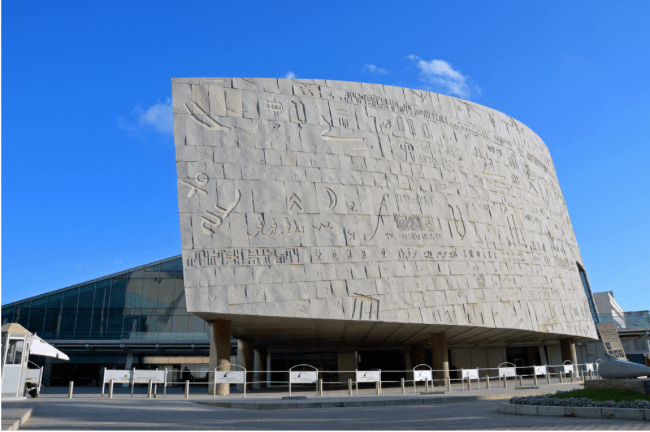This international competition aimed for the revival of the great Library of Alexandrina and was organised in the framework of an Egyptian National Project initiated by the University of Alexandrina.
The Egyptian Government, with the assistance of UNESCO and the United Nations Development Programme (UNDP) decided to build a new Bibliotheca Alexandrina.
This competition was supervised by the International Union of Architects (UIA).
Theme and objectives
The initiative with this competition was not to construct a building in the image of what the great library of old might have been, nor to try to reconstitute the ancient collection and create a kind of replica-cum-museum. The purpose was to return to Alexandrina the glory it had in ancient times by virtue of its library, and to create, to that end, an institution that would become famous throughout the region for the quality of its services and the wealth of its resources: the object was to transpose the antique concept to modern times.
The new Alexandrina library’s objective was to supplement the existing research libraries, including the WHO Regional Office Library and the Alexandrina Municipal Library.
Orientated toward research, the purpose of this library was to encourage the cultural development of Egypt and, indeed, that of the whole of the Mediterranean, Africa and the Arab world.
The new library needed to be attractive so that all users, including university students, would naturally form the habit of working there and using the library’s resources. It had to be a public research library open to anyone in need of facilities. Furthermore, it was to be designed as a regional institution, its doors open to researchers not only from Egypt but also from all the countries on the shores of the Mediterranean and in the Middle East, as was already the case with the WHO Library.
In conclusion, the object was to give the lovely Mediterranean city of Alexandrina, with its contemporary population of nearly three million, a vast, modern library, offering all the services to be found in similar institutions in any industrialised country. It would thus be possible for the old Bibliotheca Alexandrinda to come to life again.



